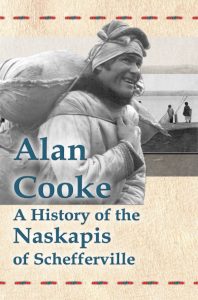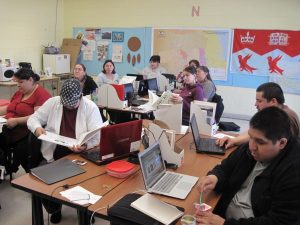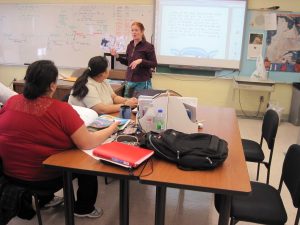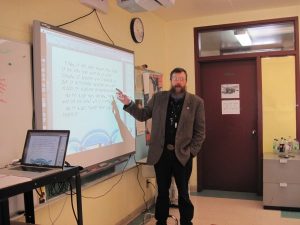
TV Snack
My paternal grandmother, Stella Jancewicz, aka “Grammy” hosted most of our holiday gatherings when I was a young child. She lived on Podurgiel Lane in Uncasville, next door to my Aunt Betty and Uncle George, and our cousins Charles (Chuckie), Mary Beth, Christine, (Chrissy) and Paula (Paula Sue) Scopelitis. Besides the usual holiday turkey for Thanksgiving or Christmas, she would cook traditional Polish Christmas Eve food, and (for us k ids) she would make a snack that we all called “TV Snack”. Later in life I learned that this was not such a unique food: the back of every box of Ralston Purina Chex cereal had a recipe for something like it. But for me there are important differences. The main difference is Cheerios. Of course, now all cereals are manufactured by multinational corporations, and General Mills brand also covers all the Chex varieties. But Cheerios belong in “TV Snack”, and are never found in the traditional “Chex Mix” recipes.
ids) she would make a snack that we all called “TV Snack”. Later in life I learned that this was not such a unique food: the back of every box of Ralston Purina Chex cereal had a recipe for something like it. But for me there are important differences. The main difference is Cheerios. Of course, now all cereals are manufactured by multinational corporations, and General Mills brand also covers all the Chex varieties. But Cheerios belong in “TV Snack”, and are never found in the traditional “Chex Mix” recipes.
We moved our young family out of the country in the 1980s to follow our work to northern Quebec, and now those holiday gatherings on Podurgiel Lane are just a distant memory. But by making a batch of TV Snack / Chex Mix between Thanksgiving and Christmas, I am able to recall those days, and find that time, the grace of God, the real meaning of giving Thanks and remembering the Birthday of Christ are able to heal, forgive and make whole any hurts we carried from our childhood. My own children do enjoy a bowl of Chex Mix during the holidays, and so I try to get some of my own recipe to them each year as well.
Here are some pictures of th is year’s batch along with my own annotated recipe:
is year’s batch along with my own annotated recipe:
Bill J’s Chex Mix Recipe
Cereals:
1 box Corn Chex (14 oz, 396 g)
1 box Rice Chex (12.8 oz, 362 g)
1 box Wheat Chex (14 oz, 396 g)
1 box Cheerios (14.1 oz, 400 g) (TV Snack recipe)
1 can mixed nuts (10.5 oz, 300 g)
1 can cocktail peanuts (10.5 oz, 300 g) (TV Snack recipe)
1 can potato stix (10.5 oz, 300g) (Bill J recipe)
1 box/bag thin pretzel stix (14.1 oz, 400 g) (TV Snack recipe)
Seasonings:
1 cup butter or margarine
6 tablespoons Worcestershire sauce
2 teaspoons salt (or seasoning salt, or sea salt)
2 teaspoons garlic powder
1 teaspoon onion powder
Pour cereals into large paper shopping bag: Pour back and forth between two such bags until well-mixed
Meanwhile, heat up butter or margar ine in a pan on the stove, adding Worcestershire sauce when melted. You can also add some of the salt and powder seasonings to this butter/Worcestershire sauce mixure.
ine in a pan on the stove, adding Worcestershire sauce when melted. You can also add some of the salt and powder seasonings to this butter/Worcestershire sauce mixure.
Get some big rectangular cake pans, (I use four 13″ x 9″ x 2″ cake pans; they fit in the oven on two racks) spread out the cereal mix in the pans. Spoon butter/Worcestershire sauce mix over the cereal, and sprinkle with the other seasonings. (Do the first seasoning in two layers; pour half the cereal mixture in, then spoon on half the butter/seasoning mix. Then pour the rest of the cereal on top, then spoon on the rest of the butter/seasoning mix.)
Put the pans in the oven at 250-300 degrees F, and let the mix bake for about 20-40 minutes.
 Take them out, pour the mix back into the paper bags (back and forth bag to bag) and mix them again. Spread the mix out in the pans again, spoon more butter/Worcestershire sauce mix over the cereal again, sprinkle again with seasonings, and bake for another 20-40 minutes.
Take them out, pour the mix back into the paper bags (back and forth bag to bag) and mix them again. Spread the mix out in the pans again, spoon more butter/Worcestershire sauce mix over the cereal again, sprinkle again with seasonings, and bake for another 20-40 minutes.
If you like you can repeat this mixing/seasoning step again. (I like to do it three times, and even melt some extra butter if necessary. Just ask Julia Child)
When cool, put into airtight tins or Tupperware. Freeze some of it for later. Give some away, but only to those who might appreciate it.
Based on the original recipe (below) and Grammy’s “TV Snack” recipe (see “TV Snack” references above. Grammy also would add potato-chip crumbs or whatever else she had around. For my recipe, the potato-stix make up for this, and adding a can of peanuts is for Grammy’s warning: “Don’t just pick out the peanuts!”.  Thin pretzel sticks and Cheerios are the main difference between Grammy’s and the Original. I would not think of making this without the Cheerios and thin pretzel stix.
Thin pretzel sticks and Cheerios are the main difference between Grammy’s and the Original. I would not think of making this without the Cheerios and thin pretzel stix.
In a pinch, you could use “Krispix” instead of Chex. But only in an emergency. To make Chex Mix in Canada you need to plan ahead and import the Chex cereals in advance. (the other ingredients are available here)
Original Recipe follows:
3cups Corn Chex® cereal
3cups Rice Chex® cereal
3cups Wheat Chex® cereal
1cup mixed nuts
1cup bite-size pretzels
1cup garlic-flavor bite-size bagel chips or regular-size bagel chips, broken into 1-inch pieces
6tablespoons butter or margarine
2tablespoons Worcestershire sauce
1 1/2teaspoons seasoned salt
3/4teaspoon garlic powder
1/2teaspoon onion powder
 Original recipe has you melting the butter in the same pan/bowl that you mix in, but I like my method better for a more consistent flavour.
Original recipe has you melting the butter in the same pan/bowl that you mix in, but I like my method better for a more consistent flavour.
Happy Thanksgiving, Merry Christmas and Happy New Year!
Bill J
PS: Don’t pick out the peanuts.
 that have recurred at negotiating tables while discussing the Naskapis’ relation to the James Bay Agreement…”
that have recurred at negotiating tables while discussing the Naskapis’ relation to the James Bay Agreement…”


























